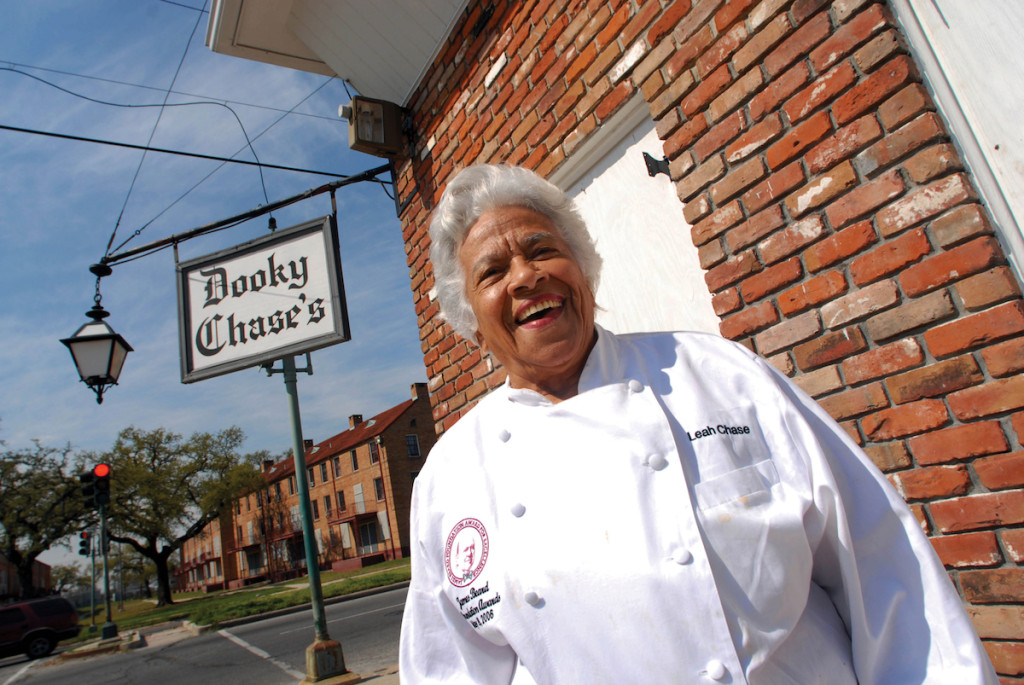[ad_1]
What makes a great collector? Leah Chase never appeared on the ARTnews Top 200 Collectors list, but maybe she should have. With her husband, Edgar (aka Dooky), Chase ran the New Orleans Creole restaurant Dooky Chase’s for more than half a century, cooking for jazz greats, civil rights leaders (who sometimes received their meals from behind bars), and, eventually, presidents. It was a vital meeting place for the African-American community and one that defied segregation laws. Artists were among her regulars, and she filled the restaurant’s walls with their work, collecting avidly. In 1977, she joined the board of the New Orleans Museum of Art, which she had long been barred from visiting; she also served on the board of Prospect, the city’s triennial. The chef and art collector died in June at age 96; below, friends and admirers recall her commitment to food, art, and people.
Jessica Harris, culinary historian, writer, and friend
Art occupied a place in Mrs. Chase’s life immediately behind family—and family was everything—but I think it certainly came before food. She came to art relatively late, as a result of the bad old days when she couldn’t go to museums. I think she would want people to do as she did: support artists, Black artists, particularly, which was her main focus because when she started doing this, there were few galleries, if any, doing that. She said many people didn’t have art on their walls, so they’d go to the restaurant and say, ‘Oh, I can put a poster up on my wall, and then when I can trade up, I can trade up.’ There was a love and admiration for artists that was palpable. And she wanted to make sure you ate.
Franklin Sirmans, director of the Pérez Art Museum Miami and curator of the Prospect 3 triennial, 2014–15
Her warmth was something that made me not only feel welcome but know that the triennial was the right organization to be part of, where the board includes a hallmark of the whole entire city, not just somebody who’s giving a check. Foods for her were like elements of a palette: this gives you this experience, and this gives you that experience. There were all these artists on the walls that I recognized as being important to a history of American art that wasn’t as prevalent as it should be. Elizabeth Catlett—the importance of a woman like that [being] in . . . this woman’s restaurant, it felt powerful, and it wasn’t overbearing. To be able to go into a place and be fed physically and then be fed intellectually, too, is a beautiful thing.
Susan Taylor, director of the New Orleans Museum of Art
She had a very multivalent way of looking at how art can impact a community, an individual, a group of people, a city. She saw it as a bridge to other communities who might not necessarily think of a museum as their home. She realized how it can create a conversation around common values. She had works by Jacob Lawrence, John Scott, Elizabeth Catlett, John Biggers, Willie Birch. Her restaurant walls were covered with work, hung almost salon-style. There was an intimacy there: you were looking at works of art that she was passionate about and eating the food that she was equally passionate about. We established a fund for underappreciated, underrepresented, [and] emerging artists of color in honor of her 90th birthday. At the opening of an exhibition with works we acquired through it, she held forth on the importance of art in everyone’s life, and said that artists need to have pride of place in any community. She was spellbinding. Everyone just listened.
Ron Bechet, artist and professor at Xavier University of Louisiana
Ms. Chase has always been someone dear to us as artists. You can think about a history of African-American art in Dooky Chase’s. It’s phenomenal. It’s a place where the Black community could go and actually see themselves on the walls. It made it comfortable, but it also made it a place where open discussion was had. The room upstairs was where Dooky Chase was breaking the law, having Black folks and white folks come together and talk about how to improve the city in terms of civil rights and human rights. Art has always been a part of that commitment to making a more human place, and so the walls represent that. One of her things was: If you can’t make the place better, why be here? She practiced that her entire life. She was a fine chef, but what she cooked was basically community. She cooked us all up. The great food was an excuse to keep her doing good for the community.
A version of this story originally appeared in the Fall 2019 issue of ARTnews under the title “Remembering Leah Chase.”
[ad_2]
Source link

